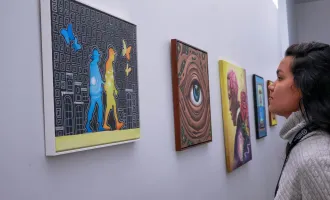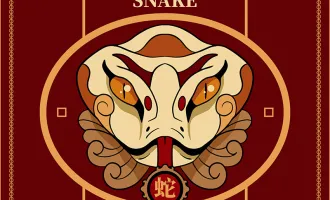
The Dior Designers
Editor's note: This is part 5 of the limited series on the celebrated haute couture designer, Christian Dior. Christian Dior may have created a world under his name, but just as important are the ones who continue to carry it forward after his death.
For Dior is not merely a brand, but rather, living proof of how an artist’s vision can hold true, yet evolve throughout time. It is the faithful progression of a legacy that continues to change with the world around it.
This is one of the things that makes Dior so special even today, more than seventy years after its conception.
In 2017, the Musée des Arts Décoratifs in Paris held a grand exhibition named “Christian Dior, Couturier du rêve,” or “Christian Dior, Designer of Dreams,” to honor the House of Dior’s 70th anniversary. Showcasing the couture works of Dior and his successors, it was a huge success, attracting almost a million visitors.
But it was not just a tribute to the founder himself. Rather, it was an honor to his entire impact, and to the succeeding designers who continued to shape it throughout the years.
To fit the thematic elements of each room, the exhibition displayed couture pieces of Dior’s successors all throughout, interspersing them amongst his own creations.
However, to truly honor how Dior has progressed through its successors, it featured a special “Designers for Dior” room. This installation, which grouped several pieces by designer, showed how Dior has evolved under each creative director, while still honoring the creator’s vision along the way.
In a recently uploaded documentary of the 2017 exhibition, curator Florence Müller discussed the unique influence of each of Dior’s creative directors.
“The artistic directors, who have taken over the reins of the company since Christian Dior, are those who have paid homage to the founder,” said Müller in the documentary. “But [they are also] those who had very strong personalities, which often contrasted each other.”
Each successive designer brought something new to the table, beginning after Dior with Yves Saint Laurent.
Only a few months before his death, Dior had personally chosen Saint Laurent, his assistant at the time, to succeed him as creative director for the House of Dior. Thus, after Dior’s sudden passing in October 1957, a 21-year-old Saint Laurent took the helm of the company.
All eyes were now on him.
The pressure was daunting — everyone was on edge, waiting to see what the young designer would create for his first collection, and if it would do justice to his predecessor’s legacy.
But Saint Laurent rose to the challenge. With only a few months to prepare, he set to work, creating around six hundred sketches within a mere two weeks.
On January 30, 1958, Saint Laurent presented the Christian Dior 1958 Spring Summer Collection, his debut showing for the House.
Immediately, the audience could tell that he had taken a slightly different approach from the founder. Gone were the accentuated, cinched waists so classic of Dior, instead making way for a more youthful, fluid approach — The Trapeze dress.
Characterized by its fitted shoulders and flaring A-line silhouette, it was a softer take to Dior’s “New Look,” but it was an instant success.
After the show, the audience gave Saint Laurent a standing ovation. The press swarmed in frenzy, dubbing him the “the little prince of fashion,” and propelling him to widespread fame.
Having established himself in the fashion world, Saint Laurent continued to serve as Dior’s head designer for the next two years. Within that time, he created six Dior collections total, some of which were met with mixed feelings.
His 1960 “Beatnik” collection, for example, alluded to a rising youth culture of the 50s — the “beatnik,” featuring darker colors, knitted turtlenecks, and leather jackets. Many magazines praised the forward, youth-focused style, while others, especially the more conservative ones, panned it.
However, it undoubtedly reflected the social movements and attitudes of the time, placing more emphasis onto the younger generation’s ideals.
Saint Laurent had broken the mold, opening Dior to a wider audience and a larger range of possibilities.
“When I was young in the 1960s, all the world watched the youth,” Saint Laurent once said. “Everywhere was the sensation of wanting to break the chains but to do something beautiful. It is my privilege to have beauty always near me [...] I created for my era, and I tried to foresee what tomorrow would be.”
After Saint Laurent was called to military service in 1960, Marc Bohan assumed his place as creative director, holding the title for twenty-eight years.
He opted for a more conservative look through his simple, fluid designs reminiscent of the 1920s.
Most notably, his first Dior collection, titled “Slim Look,” was all about creating a svelte, youthful silhouette: soft shoulders, flat hips, and knee-length hemlines. Like Dior’s “New Look,” the “Slim Look” was elegant, yet it allowed more freedom and movement for women’s changing lifestyles.
Bohan’s overall approach thus centered around creating graceful and unrestricting designs, or on creating a “new form of classicism,” by his own words.
Next in line to take the reins was Italian designer Gianfranco Ferré. Dubbed the “architect of fashion,” Ferré had studied architecture at university, and so used his background to his advantage when designing.
“As an architect, I learned to think and express myself on flat forms, on paper, and to imagine the contour of the lines of a design,” Ferré once said. “The design of a dress, furniture, a house, a room, a street, and a city are all the same process.”
Unsurprisingly, he believed that like a building, every garment needed a solid foundation as the first step. His sketches were strong, drawn with well-directed, well-placed strokes that created clear “blueprints” for his looks.
Materialized into couture pieces, they created strong, dramatic looks on the runway, at times looking more like sculptures than clothing.
For instance, in his 1991 Spring Summer Haute Couture collection for Dior, he presented a reimagination of the classic Dior Bar Suit with billowed sleeves, the classic nipped waist, and a matching billowed white skirt, thus projecting a sense of structural symmetry.
He was not afraid to experiment with shapes and volumes, and so brought back an atmosphere of extravagance, similar to that created by Dior.
It was almost as if the House of Dior was returning to its original roots, except this time, there was an added Italian twist, through Ferré’s love of Baroque embellishments.
Then, in 1996, along came John Galliano — the “punk couturier.” Simply put, his designs were eccentric. Ferré had created flamboyant and dramatic pieces in his own right, but Galliano pushed the limits even further.
He designed pieces that challenged the virtual gridlines of the human body, folding and draping fabric in exaggerated ways that no one had ever seen before.
The looks were then often paired with equally as dramatic accessories, and presented on elaborate, stage set-like runways.
For example, his 2007 Spring Summer Dior Haute Couture collection, which was inspired by Japan, featured origami folded into the fabric of the pieces, which ranged from “New Look”-esque skirt suits to evening gowns.
And the runway was just as complex. Models climbed stairs in towering, Japanese clog-inspired heels to pose by a giant chair or cherry blossom branch, among other structures.
His ability to manipulate textiles, along with his wide range of inspirations from other cultures, truly presented the House of Dior as innovative, and brave enough to challenge the conventions of design.
Next week, we delve deeper into the creative minds that maintained the exceptional Dior quality.



